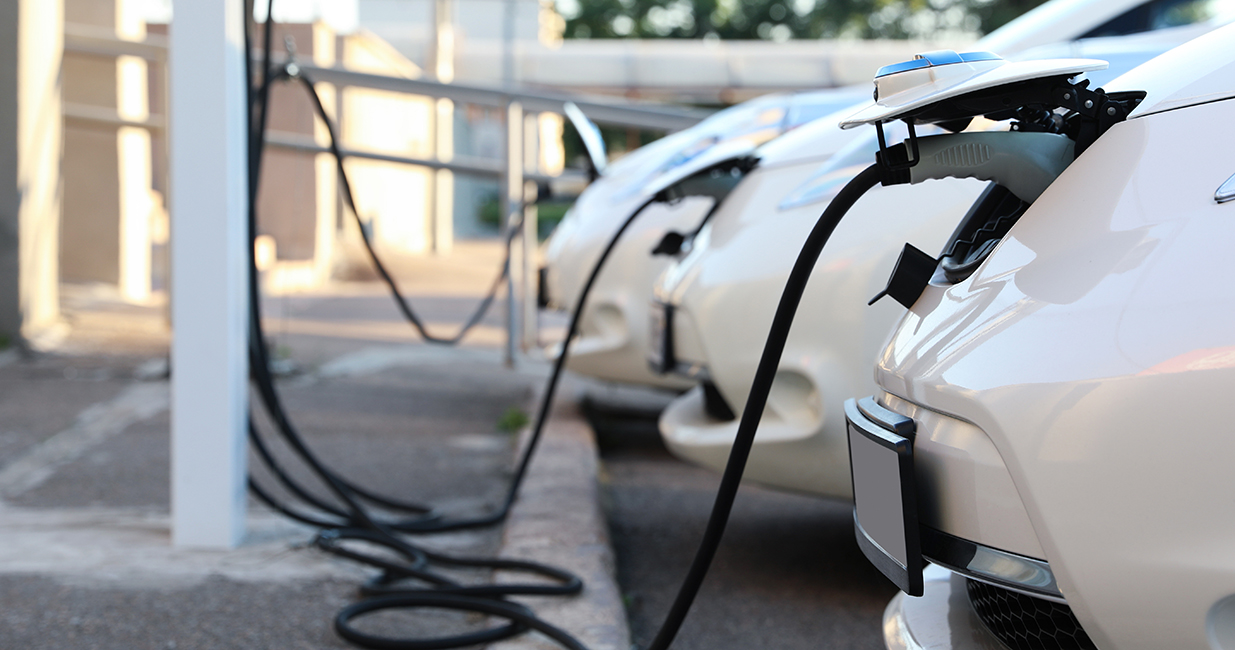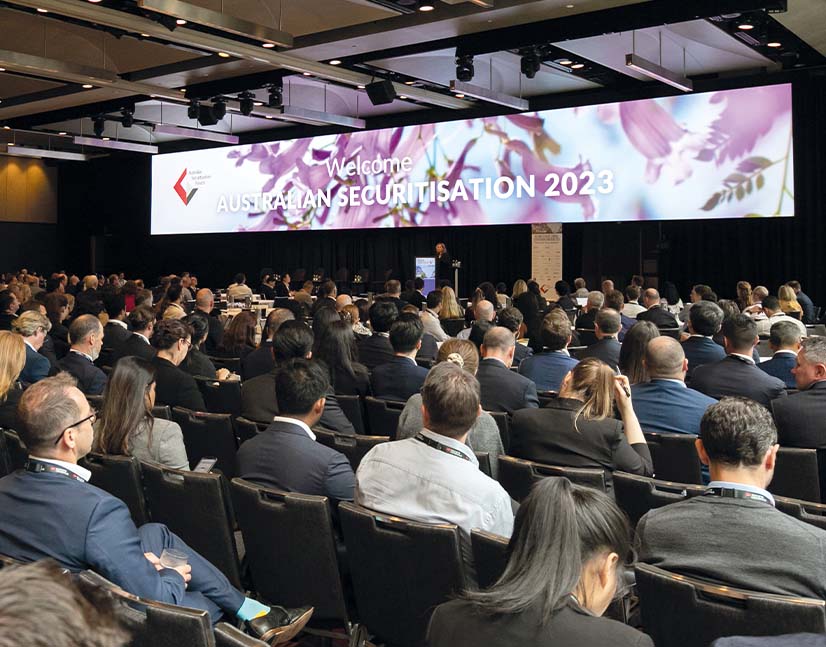
EVs’ Australian power-up gathers pace
After years of lagging uptake in other global economies, uptake of electric vehicles in Australia is finally starting to accelerate. Clean Energy Finance Corporation and KangaNews hosted institutional participants in the sector at a September roundtable in Sydney, to discuss the detail on infrastructure and financing behind the headline uptake numbers.
THE POLICY ENVIRONMENT
Craig How is the policy environment shaping the local market for electric vehicles (EVs)?
LE Two or three years ago, the states were leading Australia’s EV strategy and uptake by offering supportive incentives across the eastern seaboard, including stamp duty exemptions and targets for 2030. The eastern states stepped in due to policy vacuum at the federal level.
There is now more leadership from the current federal government, which is a very pleasing development. However, from a state perspective, Victoria has taken a step back, followed by New South Wales (NSW) in its recent budget update. This is highly disappointing because the market is not yet sufficiently equipped for the states to remove subsidies or the stamp duty exemption.
LIANG I completely agree. In Australia, 8 per cent of all new cars sold are EVs, which is still lagging most of the rest of the world. However, we know from global comparisons that 5 per cent is the tipping point at which disruption becomes inevitable – so we are past the point of inevitable disruption.
To move from early movers to mass market, at around 25 per cent, we need to have supportive factors in place. An important component is policy settings – we are not at the point where we can remove policy.
DI GORI Unfortunately, we continue to have a mismatch of policy across any number of settings. The decision in the September NSW budget underscores the continued history of governments struggling to grapple with the EV transition. I think we need to be realistic that the EV sector will continue to be held back without consistency between federal and state governments.
It is no doubt a complex policy area, but there are precedents for federal and state governments implementing consistent policy settings with positive outcomes. Nonalignment of federal and state governments is just another example of the challenges Australia faces.
It is positive to see the federal government finally start to take a stance but, at the same time, it will be able to do very little without state government cohesion.
LE I think it is a budget issue. In my view, the NSW government still has the ambition to lead. It has one of the leading EV strategies and its EV fleet incentive remains in place.
DI GORI But there are other unknowns. For example, the Victorian EV road user charge is being challenged in the High Court and the outcome may determine how electric and hybrid vehicles are taxed in Australia.
This is why we need the federal and state governments to sit at the same table. Transition is inevitable and the federal government needs to decide how it can best support the states through this transition. Without this, we will continue to have an inconsistent policy response from each of the states.
The confusion this causes cannot be underestimated. We see it within our own customer base. A procurement manager in charge of fleets across Australia must operate within settings established by individual states and a continually changing policy framework. It is very challenging.
MILSOM In our view, the federal government’s national EV strategy is a good one, focused on solving the big barriers to EV uptake relating to vehicle supply, charging infrastructure, and consumer awareness and demand. In particular, the recently announced review of fuel efficiency standards in Australia is a very important step.
One only has to look at the the ultra low emission vehicle regime on older and higher-emitting vehicles in London or the clean car discount in New Zealand to see how supportive these types of initiatives are in the transition to EVs.
However, we query the efficiency and fairness of the strategy’s consumer-facing financial support being delivered via fringe benefits tax (FBT) relief on novated leases. Novated leases can lack important consumer safeguards such as responsible lending requirements, or lock customers into longer-term arrangements. Due to pricing opacity, a significant amount of the incentive value is often captured by intermediaries. We believe there is room for the government to provide easier and more equitable access to financial incentives.
DEMAND AND SUPPLY DYNAMICS
Craig To what extent has the landscape transformed as the market has evolved from low supply and demand to ongoing low supply but significantly increased demand for all types of EVs?
MILSOM We prepared a report with Accenture in March 2022 on the potential for EVs in Australia that studied uptake, trajectory to date and the consumer decision-making process for EV adoption. In 2021, EV sales were 2 per cent of all new car sales in Australia. At around 8 per cent now, it is on par with the global average in 2021. Demand-led supply has increased fourfold in just over a year.
Taking the data we had from a range of international sources and overlaying it with the trajectory of jurisdictions we view as leaders in EV adoption – such as China, the UK and California – this level of adoption places Australia ahead of comparator countries relative to when they started their transition to EVs. It is pleasing to see adoption exceeding expectations even though supply is constrained in Australia.
TRAN We work with a number of lenders and demand continues to be very robust. We faced some logistical issues early last year and uptake was slow as a result. However, logistical issues eased in the second half of 2022 and sales improved – and they have not slowed down since.
Sales of EVs in the last 6-7 months – at about 8 per cent of all new cars sold – far exceed the volume of sales of around 4 per cent in 2022. New sales are predicted to reach around 10 per cent this year.
It is clear that there is strong demand. We need to solve the supply issues while at the same time making sure imported EVs can be serviced with public charging infrastructure in the right places.
DI GORI The extent of the uptake in demand for novated lease EVs off the back of the federal government’s changes to FBT is quite remarkable. In the novated leasing space, almost one in two vehicles being financed by our business is now an EV, compared with less than 5 per cent a year ago. To me, this suggests the demand-side response will be swift when the right policy settings are in place.
However, there are still supply-side challenges. With the average amount financed of around A$70,000 (US$45,000) for new novated finance leases where the vehicle is an EV, it is mainly professional-services type employees that can afford to purchase these – in large part Tesla-manufactured – vehicles. To progress the market, we need to see a meaningful supply-side response from a range of manufacturers, increasing the diversity of makes and models available to make them better suited for the mass market.
We expect the demand-side response in the novated finance market would be be very substantial if the current policy setting combined with a supply-side response. Many more employers are now considering offering novated leasing, which then expands the number of individuals who will consider the transition to an EV.
Leasing and user finance options
Fleet and employer-sponsored takeup will be the biggest single driver of electric vehicle (EV) demand. Getting the financial incentives right could be a major difference maker.
LE Through our own employee base and in talking to other organisations, we have found considerable interest in EVs – especially with the fringe benefits tax (FBT) exemption. But employees are hesitant to try a new technology, especially if they haven’t fully considered all the requirements and implications.
At the end of last year, we launched a fully flexible, month-to-month subscription package, with the added benefit of salary packaging to make use of the FBT exemption. It has been very popular because it is a ‘try before you buy’ model for people who are not sure if owning an EV will work for their lifestyle. They can return it with 30 days’ notice and no cancellation fee.
We have seen significant uptake in the EV subscription offer within the Origin Energy employee base as well as strong interest from employees of other organisations that are offering the programme. A lot of the employees who have taken an EV with Origin would not have taken the first step without the flexibility the subscription provides.
FLEET SOLUTIONS
Craig Is the situation similar in the fleet sector? What are the specific challenges?
LE There are limited fit-for-purpose vehicles for EV fleets. The makes and models that are more affordable and better suited to fleet, such as the Hyundai Ioniq and Kona, are supply stricken and scarce. There is also a trickle of light commercial vehiclesbut they have very low range, of less than 250 kilometres.
DI GORI Half our portfolio comprises light and heavy commercial vehicles. When we cannot fulfil 50 per cent of our customers’ requirements because there is no meaningful EV option, it is a difficult conversation to have.
A few vans and SUV-style vehicles are starting to trickle into the Australian market and these may prove to be fit-for-purpose vehicles for our fleet customers. This may assist with further EV penetration over the next couple of years.
We have ongoing, engaging and genuine conversations with customers that want to know what type of EVs are available and what the EV transition means for their fleets. But engaging in meaningful dialogue with customers on fast transition is a major problem when there are only around 30 makes and models in Australia and only a handful of fit-for-purpose EV vehicles for fleet customers.
LIANG The fact that fuel efficiency standards are under consideration has given the original equipment manufacturers (OEMs) leverage. Our OEM clients are already finding success increasing the number of EVs that are being imported, based on this fact alone. Vehicle production cycles are 2-3 years so they know they have to bring the vehicles in now if they believe the standard is coming.
Having said this, supply is not consistent – with trucks and utility vehicles there are far less vehicles coming in. Globally, the total cost of ownership has fallen but scarcity of vehicles in Australia means this isn’t replicated here.


LE We have changed Origin Energy’s fleet policy to mandate EVs as default. If someone has the ability to charge at home, we install a smart charger at no cost. Because we are an energy company, we have been creative with our charging solutions – except in Queensland, where we can’t install chargers in our employees’ homes unless they are prepared to go on a control load.
DI GORI A traditional fleet will be managed by a procurement team but it may not have the expertise to manage the transition to EVs. Not many corporates have this expertise in-house. They need to deal with the transition but are potentially not going to be able to do so using internal resources, so they will need to consider outsourcing to fleet managers. I suspect not many corporates that have traditionally managed their fleet in-house have thought about this in any meaningful way at this point.
LE Change management is often overlooked by organisations considering the transition to EVs. They used to provide employees with a car and a fuel card. Now they need to talk to facilities to install charging at the office, and to the employees and to the employees’ landlords and bodies corporate. As we have now gone through this process first-hand for our own fleet, we are better equipped to support our business customers in the transition.
LIANG The EV conversation usually centres on the cars because this is what everyone is excited about. However, there is a significant infrastructure issue – and not just physical infrastructure but societal economic infrastructure. For years, fleets have outsourced their entire fuelling infrastructure to a fuelling ecosystem that now has to be brought completely in-house.
DI GORI Most corporates are grappling with this. Some don’t appreciate the speed with which this will have an impact on their business. The International Financial Reporting Standards will come into force in Australia from July 2024, requiring larger companies to report on scope-one, scope-two and scope-three emissions. Smaller corporates will be required to report in the years thereafter. We recently undertook a series of briefings for our customers to help them understand emissions reporting.
It is important to frame the complexities involved so customers understand that, for example, ICE [internal combustion engine] vehicles in their fleets are captured within scope-one emissions and the transition of these to lower-emitting vehicles can go a long way to meeting scope-one emission reduction targets.
Replacing an ICE vehicle with an EV that is charged in the workplace falls within scope-two emissions. Take the same vehicle and charge it at home, and it becomes a scope-three emissions reporting item. Having the employee use renewable energy to charge the vehicle at home removes it from all forms of reporting. Our customers are all engaged in the conversation and they want to be prepared for the transition. But we quickly get back to the supply problem, given the limited range of fitfor-purpose vehicles currently available in Australia. TRAN Customer education is very important.
Customers typically order their EV online. This is a good thing for convenience but lacks interaction between the customer and a specialist that can best advise them. Education is even more important when it comes to charging, because the charging decision is made early in the process and a customer adopting the right charging option from the outset is better than having to retrofit later.
EV MARKET INFRASTRUCTURE
Craig There is also a potential challenge in theform of the electricity grid as it currently stands. Is it sufficient to manage the requirements of charging an increasing volume of EVs, particularly given there may be unpredictably large variations in the demand load?
MILSOM Concerns with the grid are well-founded in the data and continued investment in infrastructure is clearly needed. But there is a reasonable way to go before we reach the point where EVs are the primary driver of these issues. Even so, we know from international data that an EV can increase household energy consumption by as much as 40 per cent.
One of the best ways to mitigate the effects of increased consumption on the grid is to continue to support the adoption of household solar and batteries. Residential solar coupled with battery storage reduces charging costs for EV owners and assists in reducing the impact on the grid from EV demand and growing solar generation. For this reason, we view EVs as an important catalyst for the improvements we need at the end of the chain.
Outside the home, the roll out of larger-scale charging infrastructure – such as street-side chargers and charging for apartment and office buildings – is in its very early days. It will only be when we are further into this journey that we will see real pressure on the grid from these sources.
Craig How much difference is there between ‘dumb charging’ – which takes no account of power demand or cost – and smart charging?
TRAN Dumb charging will put an unpredictably large variation on load. It is very important that we ensure our partners educate their customers on smart charging from the off. n LE We strongly encourage EV adopters not to install dumb chargers because not being able to manage chargers efficiently is a nightmare from an energy system point of view.
All our chargers are smart and are connected to our virtual power plants (VPPs), which means we can help our customers save money by scheduling their charging according to their tariff structure. It also gives the network more comfort because we know where the chargers are and what the charging patterns will be.
It is not just value for the electricity system. It is sharing this value back to EV drivers to help subsidise the cost of charging. In the early adopter phase, EV drivers are very engaged. As we get to mass market adoption, consumers and EV drivers need to be informed about charging options so they choose the one that works for them as well as for the energy system.
MILSOM Plenti is active in the VPP space with its GreenConnect platform, a centralised hub that makes it easier for solar and battery installers to connect their customers to a range of VPPs. This has given us an interesting perspective on how consumers understand third-party control of their energy assets, the types of offers and incentives that resonate with consumers, and how to help them understand the trade-offs.
Early on, industry was concerned about how users would understand VPPs and, in particular, their comprehension of battery use, and charging and discharging patterns, relative to the value they receive. In reality, feedback is that users understand how grid connection may have an impact on their battery availability and lifetime usage but are happy to make the trade-off for the financial benefit of VPP membership.
We expect a dynamic charging environment to be more or less the same for EVs. When there is an incentive for consumers, we expect they will come to terms with it reasonably quickly – particularly when it requires no active management themselves.
LIANG Our experience is that consumers want smart charging – and not for the future hypothetical benefit of making money but simply because they like it. EV owners are no longer early adopters but the early majority. They enjoy being able to see data about charging.
When it comes to load shaping, EV loads are one of the easiest to defer as they are very low impact to consumers. They don’t mind if their charging stops at 1am or 1.15am provided the charge is full by morning. Customers are willing to change the traditional paradigm for EV charging.
Craig We seem to be talking mainly about charging at home – but is this always an option?
TRAN No – in fact there is only potential for about 30 per cent of charging to take place at home. The majority will need to rely on public infrastructure. There is currently greater EV uptake from customers with access to off-street charging. But when it comes to mass adoption, the level will reduce owing to a great proportion of owners living in apartments. n
LIANG Apartment living absolutely is a challenge. It is not so much a challenge for greenfield, because the National Construction Code includes provision for EV charging. But it is hard to do infrastructure on brownfield – and we have a lot of it.
TRAN The ratio of public charging points in Australia is one charger to about 17 or 18 EVs. It is a lot lower in the EU and China. This is something we need to drive to encourage EV take up.
LIANG When we talk about infrastructure, usually the first thing that springs to mind is public charging infrastructure. Actually, there is infrastructure that is even more critical to the transition than public charging – for example, fast-tracking grid connections for the 50 per cent of new vehicle plates in commercial. It takes years to get grid connections and this is not quick enough for the transition.
There is a clear need to update policy settings to boost the uptake of charging points in apartments. There is also an equity issue for people who are off-street or renting, who have to pay twice as much for their fuel.


DI GORI I would go as far as to say the private infrastructure issue is binary. Either it gets solved or the transition will not happen in a meaningful and effective way – because a country like Australia cannot rely on public infrastructure.
The vast majority of public infrastructure sites are not viable financial products. If we can’t solve for brownfield apartments, we will prevent a sizeable portion of the Australian population from having the infrastructure to operate an EV. It is highly unlikely that large portions of this population subset will turn to EV product as a result.
LE If we had to advocate for a pocket of government funding, I would argue for more going into the private charging space. Even if someone has access to off-street parking, the cost of installing a smart charger is considerably higher than a dumb charger.
Encouraging uptake by subsidising the cost of smart chargers, as well as solving the brownfield apartment building challenge, would be more beneficial to EV uptake than focusing government money on public charging.
DATA AND CREDIT QUALITY
Craig Moving to the funding side, one of the challenges for EV securitisation finance has been data – especially resale value data. What is the latest on this issue?
TRAN With increasing volume of EVs, sooner or later – perhaps as soon as later this year or early next – we will inevitably see a term securitisation deal come to market. Lenders will need to refinance their warehouse funding if the market is to continue to grow.
At the moment, we don’t have a concrete view on how to deal with residual value risk in Australia. In the recent Tesla Auto Lease Trust 2023 asset-backed securities (ABS) deal in the US, one rating agency applied conservative assumptions to the residual value – reducing it by about 10 per cent relative to ICE. The rating agency says this haircut has improved over time. However, actual performance based on residual value outcome has outperformed rating assumptions since 2018 – but the agency still applies the haircut, because of insufficient data.
DI GORI Rating agencies are extremely conservative in this regard. They claim they need more data to be able to analyse residual value risk accurately. The New Zealand market has had a strong uptake of EVs so there are some valuable data points, however the rating agency approach is still to start with the ICE vehicle assessment and assume larger relative losses for EVs – and thus apply more punitive haircuts.
Ultimately, this means the equity required to finance the portfolio will be significantly higher – and it is the end customer that pays. The fact that this is an issue in the deep US market for Tesla, where there is ample data on resale value, demonstrates there is no easy solution. I don’t expect the rating agencies to change their approach in the short-to-medium term.


LE While the industry waits for data, there is a very important role organisations like the Clean Energy Finance Corporation (CEFC) can play with residual value. Origin funds power plants, solar and gas but, because of the residual value issue, we are now also funding EVs on our balance sheet. Taking a view on residual value is not in our DNA, but in order to support our customers in the transition – and so we are not accepting the residual value the financiers or rating agencies dictate – we believe we have to take an industry-leading position.
Government-owned and private organisations have an important role to play in the early stages of any market. If we sit around waiting for the data to come, it will be several more years until we see a more sensible level of residual value being posted.
DI GORI We are taking a market-leading stance, which we believe is our responsibility as we have been active in the Australian market for almost 40 years. To support customer transition, we have elected to set our residual values for EVs at ICE-equivalent levels.
We can take extremely conservative views on residual value but it makes the overall whole-of-life cost materially more expensive, which slows down the transition. We believe we have a role to play in financing EVs that will then provide used vehicle resale data points the industry and the broader population needs. Mass market uptake is supported by owner confidence that they can sell their EV at a predictable level in future.
The data will not come from mums and dads buying EVs, because mums and dads hold onto their cars much longer than corporate fleet customers. Private passenger vehicles are held on average for 7-8 years but fleet customers will turn their vehicles over at the 3-4 year mark. Resale data points will come through more quickly in the fleet space.
It is all well and good to have a view on Tesla residuals. But a Tesla is also not a fleet vehicle. The typical fleet vehicle will be an ICE equivalent, and we will go to market with these equivalent settings so we can lead the conversation from there.
MILSOM Much of the available data is from the US and reflects older EVs that are of a different technology generation, so we exercise caution about relying too much on this information. However, we now have some useful data from the US and Europe on battery usage, range and degradation. This offers a positive picture – that batteries are lasting longer and remaining of higher quality than expected.
There is so little by way of used sales – less than 1 per cent of our book is used EVs – and residual value is affected by larger manufacturers making significant price changes across their range. This means there is limited useful data in the Australian market at the moment to get a fair sense of value.
On credit quality more generally, the profile for EV buyers is very robust with meaningfully higher average incomes relative to other automotive borrowers and a higher credit score than the average across our book. EVs are very much a prime borrower product at present. We believe this customer profile supports increased investor appetite in the asset class. This may change over time but for now it is a good-news story for the sector.
Craig How has the funding market for EVs evolved over time?
LIANG We have been pleasantly surprised at the earlier-thanexpected engagement of global tier-one funders with the specifics of EV charging. There are multiple players in the market with different focuses. But there is a growing understanding from funders that boots on the ground, capability to deploy at scale and technology are inextricable when it comes to the EV market. For all its policy hiccups, this is an industry that is growing rapidly and it is pleasing to see the sophistication in funding.
LE It’s a very attractive industry for financiers because it comes with a green halo. For banks and third-party funders, this is a renewable asset that they are very keen to hold in their portfolios. Whether it is vehicles or charging, there is a lot of interest in providing finance, and quite a lot of innovative structures as well.
DI GORI We have had a long-standing relationship with the CEFC, which facilitated very early lease financing adoption for low-emitting vehicles and now for EVs. The CEFC has played a key role in funding the transition story, particularly in the securitisation market.
Many ABS investors ask when they will be able to have EVs in their portfolios – it is clear that there is underlying demand. Novated EVs are a very different proposition to operating lease EVs so there is natural conservatism about residual value risk settings for operating leases. There is also great curiosity, however, as many investors are interested in understanding what the transition looks like.
We have been fortunate with our programmes to always have a component of the portfolio in lower-emitting vehicles. We started with lower-emitting ICE vehicles that became hybrids, then plug-in hybrids and now EVs. We have open dialogue with our ABS investors about funding these vehicles and the leasing that attaches to them.
The next phase of development is to ensure we have a fully functioning public ABS market that supports EV financing. A public capital market is a prerequisite for financing the transition, and initial conversations with investors show there is clear appetite in Australia for EV ABS.
In Australia, 85-90 per cent of collateral in public securitisation is mortgages. There has always been demand for diversity at the asset level and there is a great response from investors when we bring our leasing securitisation deals to market. We believe EV collateral will offer an additional diversification option for our investor base.


TRAN Many lenders are seeking to accelerate their EV deployment and investors are as interested in the asset class. There is a focus on the residual value of EVs but over time, as EV ownership overtakes ICE, there will be a similar focus on the residual value of ICE. Then, investors will start to ask about residual value for ICE, and this will translate into the funding goal.
DI GORI This in itself will help the transition because, at some point, fleet companies will start reducing residual values for ICE vehicles. This gradual reduction in residual value increases the cost of ICE vehicles.
On the other hand, as relative value settings for EV vehicles change, and potentially improve, over the time, this will improve the whole-of-life cost for EVs. Technological obsolescence is a key consideration, but this is as true for ICE as it is for EV.
LIANG The other risk is that 2050 is when the country is committed to net zero, which means 100 per cent of our new car sales must be EVs by 2035. For infrastructure, 12 years passes in the blink of an eye.
Three models have been developed. One is public charging, which can be funded but is losing its halo effect because of usage risk. Next is depot-style charging, which is quite familiar. Finally, there is private charging. As Dom said earlier, the transition hinges on private charging.
For Australia, it has to be about bringing the lowest cost of capital to the transition. Otherwise, it will cost billions of dollars more than it should. Because it is diversified, everybody is relying on their own cost of capital – and this is far more expensive than it needs to be. n LE Like the CEFC, the Australian Renewable Energy Agency (ARENA) has been instrumental in driving EV uptake – including rounds of funding focused on supporting uptake in private charging.
At Origin, we partnered with ARENA to help fleets drill down into the cost of charging. This is a not a cost that the fleet has had to foot in the past. It didn’t fund petrol stations, but now it has to fund charging stations. Before private capital comes into the market, ARENA and the CEFC are playing a vital role.

nonbank Yearbook 2023
KangaNews's eighth annual guide to the business and funding trends in Australia's nonbank financial-institution sector.

WOMEN IN CAPITAL MARKETS Yearbook 2023
KangaNews's annual yearbook amplifying female voices in the Australian capital market.












